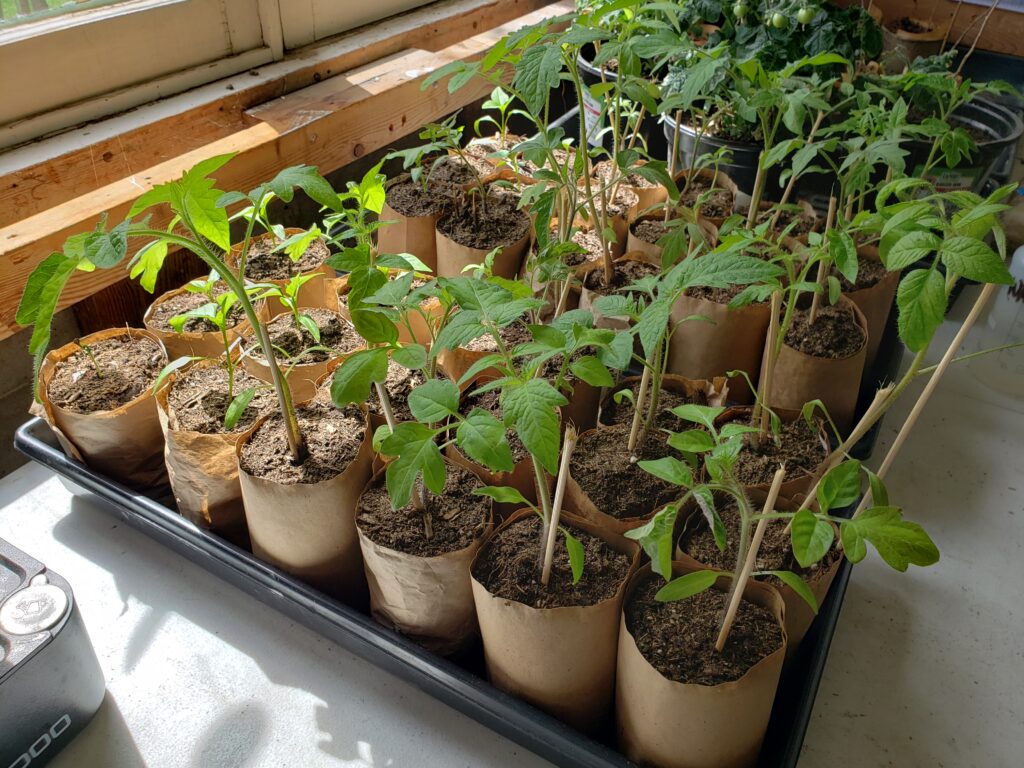Now that the tomato and pepper starts have gotten to where their roots are pushing through the peat pods, it’s time to get them some more space. We have tried peat pots and coconut pots and didn’t love either one. The coconut pots didn’t ever seem to break down and just made a mess—we also tried to compost them and they are still quite ‘hairy’ two years later. The peat pots got expensive, would mold easily, and didn’t seem to break down particularly well either. Mr. B saw a trick online for making one’s own pots, so we’ve done that for the last two years and it works perfectly.
The only supplies needed are paper, trays, and a wine bottle with a ‘punt’ in the bottom. We use dunnage that we’ve collected over the last year and cut it into 8” x 18” pieces. We’re very big on reusing things like dunnage that we get with packages, so this works out great. We place about 5” of the paper on the bottom part of the wine bottle and roll it so it’s a little cylinder. Then we fold the bottom three inches into the punt of the bottle so it’s tucked up into the cylinder. That’s it! Then we put a little soil in the bottom, then the peat pod, and fill with soil around it (Pics below). For soil we have a huge rolling garbage bin-type container that we’ve filled just less than half with peat moss and the rest with potting soil. That combination seems like a good medium for our plant starts.
We use pretty strong trays to hold these, and we can fit 18 paper pots into each standard tray. We like to keep them packed together somewhat tightly for structure. The tricky part is watering. With the peat pods we watered into the bottom of the tray so that the pods would take the water up through the bottom. For these pots, adding water to the bottom of the tray would wreck the pots, so we start with a spray bottle and water from the top. Eventually when the plants get bigger we will dribble water into the soil at the top of each pot.
By this point also, we have propped the tomato starts up with wooden kebab skewers to keep the stem upright and not flop over and break. We break the skewers in half for the first part of the tomatoes’ life, then replace those with full skewers and save the halves for next year. For the most part the peppers won’t need skewers, but they can always have the leftover halves if they start getting too tall before planting. When it’s time to plant, we just stick the whole paper pot into holes in the garden. They break down well in the soil and the best part is that they are free!



